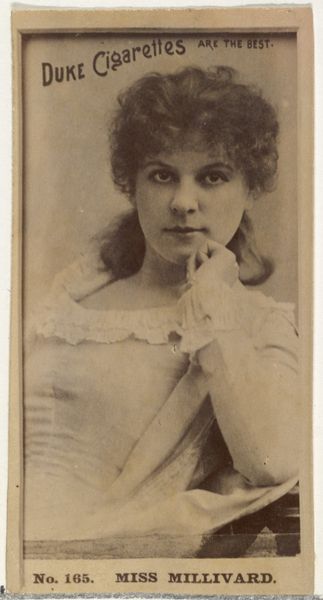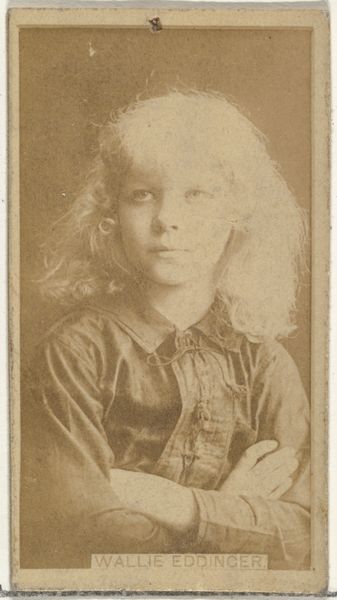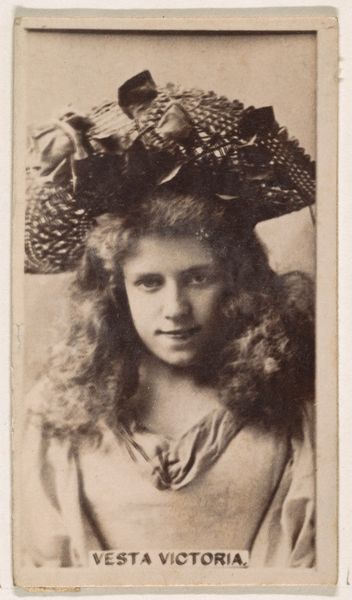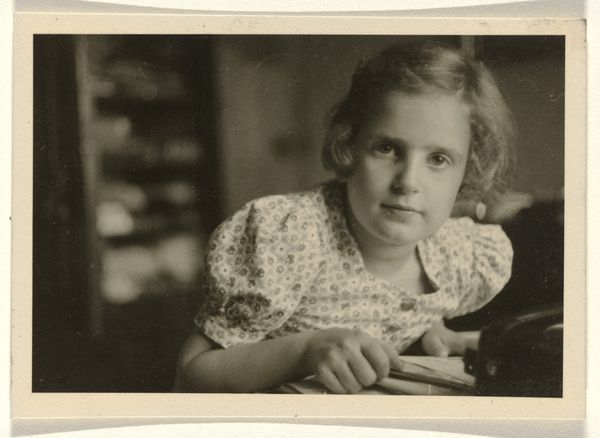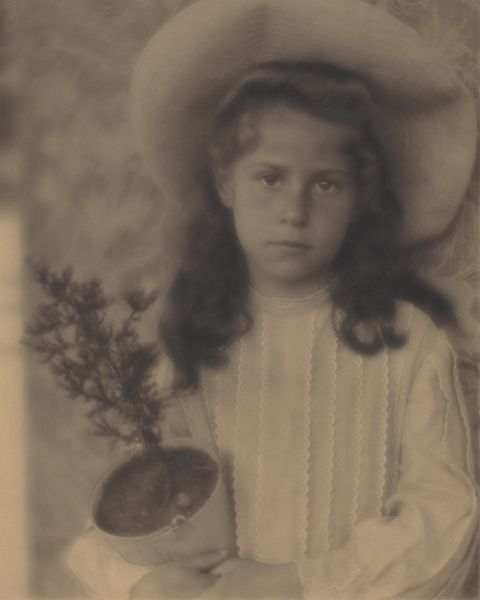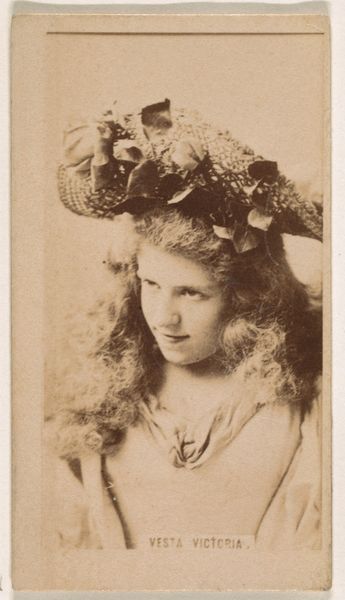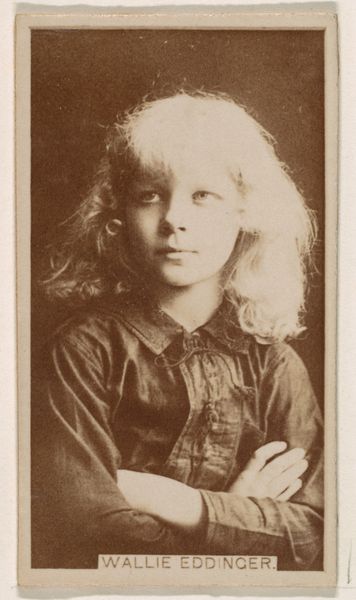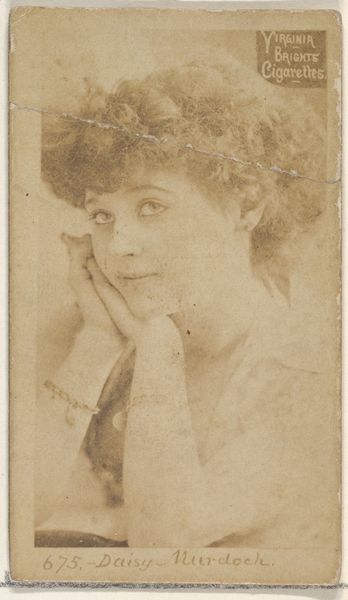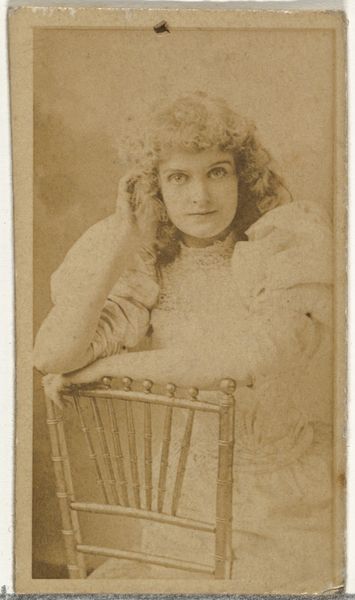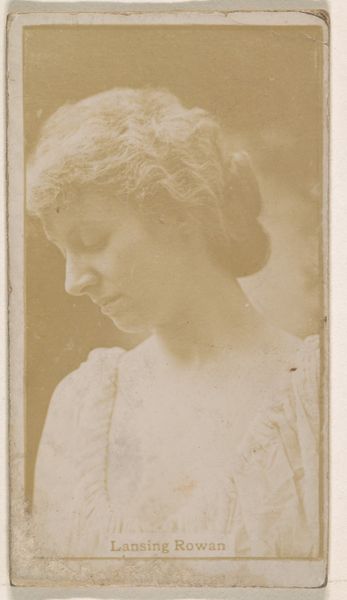
Dimensions: image: 24.9 × 20.2 cm (9 13/16 × 7 15/16 in.) sheet: 24.9 × 20.4 cm (9 13/16 × 8 1/16 in.) mount: 50.5 × 33.3 cm (19 7/8 × 13 1/8 in.)
Copyright: National Gallery of Art: CC0 1.0
Editor: This gelatin-silver print, "Georgia Engelhard," was captured by Alfred Stieglitz in 1918. It feels both intimate and a little unsettling. What symbolic weight does this image carry for you? Curator: The knitting needles, for instance – consider them not merely as instruments of domesticity, but as wands enacting creation and protection during a time of global turmoil. It speaks of hope in an uncertain period, much like we see mirrored during contemporary crises. Editor: Hope, yes, but I’m also drawn to her rather stern expression. Is there a contradiction there? Curator: Her expression can also be interpreted as an unflinching look, a confrontation with a turbulent world. Perhaps the knitting is also about claiming control over chaos, thread by thread. Does her youth strike you? The First World War had an insatiable appetite; to imagine a young knitter at that time becomes quite poignant. Editor: That's a perspective shift! The act of knitting suddenly has an urgency I didn't notice before. So, you’re saying the knitting isn't just a domestic scene, but an act loaded with personal and historical resonance? Curator: Precisely! And think of Stieglitz himself, devoted to modernism. Was this embrace of a traditional domestic craft perhaps also a commentary on the rapidly changing role of women? What meanings could that hold? Editor: I hadn’t considered Stieglitz’s intention in that light. It gives a completely new texture to the photo, layers of cultural significance. Curator: Indeed. Every detail contributes to its dense web of meaning. It seems that nothing is ever "just" one thing.
Comments
No comments
Be the first to comment and join the conversation on the ultimate creative platform.

